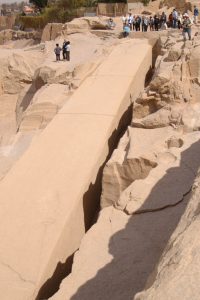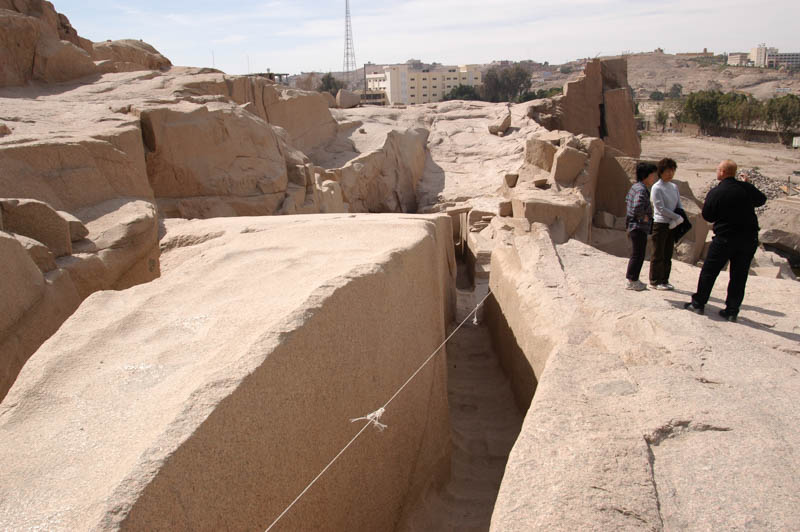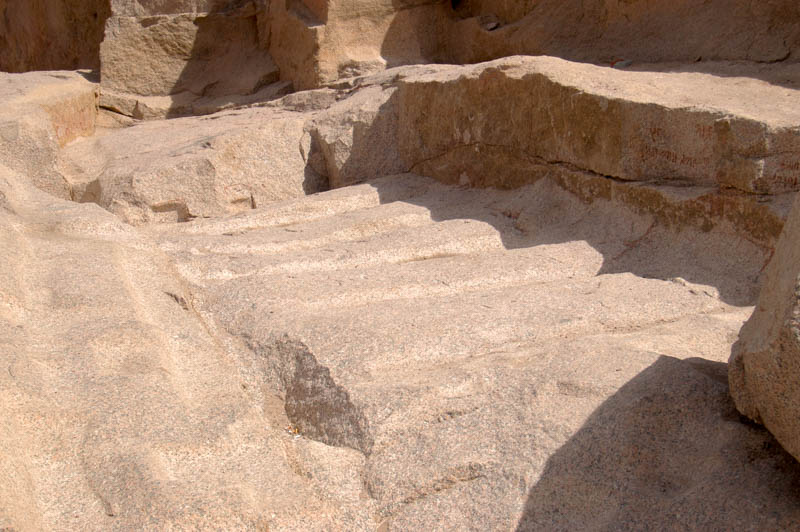
The granite quarries in Aswan produced all the “red aswan granite” used in monuments throughout the Nile valley. The quarries aren’t that interesting, really, except for the enormous unfinished obelisk that lays in situ on the wall of the quarry. (You can actually see it in the Google Maps satellite view)
The obelisk was discovered by an Egyptologist named Rex Engelbach in 1922.
The obelisk was roughly finished, but a crack was discovered before it was finished and it was abandoned. This is the largest obelisk ever found — despite not being erected — and would have stood about 42 meters high and weighed in at 1168 tons. It was intended as a mate for the obelisk that originally stood at the Temple of Karnak (now in Rome and known as the Lateran Obelisk), but the flaw was too severe.

The obelisk hadn’t been decorated yet, but form the marks and state of the stone, experts have figured out how they made the things. The outline of the obelisk was cut shallowly, and deep grooves were cut. Wooden wedges were inserted into the slots and soaked with water. As the wood expanded, it cracked the stone along the pre-scored line and separated the rough shape of the obelisk from the surrounding stone.

The remaining rough shape was smoothed using quartz sand and water. We’re still a bit unclear on how they were transported (probably on barges) and how they were erected, but it is clear that they were decorated while prone.

